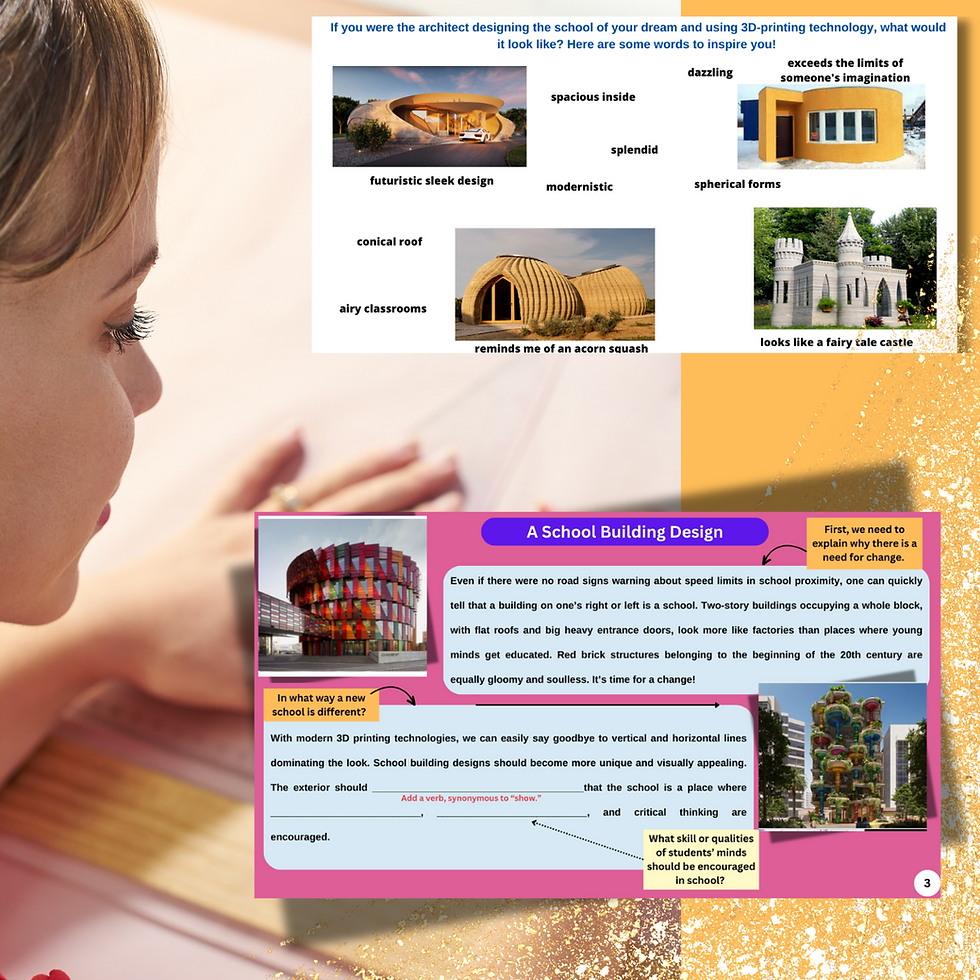REMEMBER A DAY WHEN…
- Read to Succeed
- Jul 18, 2019
- 3 min read
Updated: Aug 3, 2022
“My story is very short”, says one of my students, her eyes filled with sadness. Being a very good student and an eager writer, she is truly upset. The cause of her frustration is a seemingly easy assignment – “Describe a beautiful place that you saw during a recent family trip.” I try to support my student, but I can clearly see that in spite of all the prep work done in class, the story is truly not developed well enough and is quite chaotic and illogical. Why? There are a number of reasons, and the lack of vocabulary is far from being the main one.

When children see a writing prompt that starts with the words “ Remember a day when…”, “Think of the moment when…” they do exactly what they were told to. They are trying to remember some events and write down what they have got in their mind. The reality is that they don’t have much to put on paper. We are not going to talk about the way memories are being formed and how quickly we forget things since it’s not the subject of this article. Nevertheless, the truth is that we are quite often left with a ghost of an experience that we had, a sketch that is barely “visible”.
This is why the instructions like “add more sensory details, smells, sounds, tastes” do not have the impact on our kids that we are hoping for. To get a story that is full of descriptive details, we have to be honest and make it clear to children that they are creating a story, not a police report. This is why it’s totally fine to imagine things and to add some flesh to the “bones” of their memory. We need to explain that the power of imagination is needed not only when they are writing a story about dragons or vampires, but also when they are telling about the first day at school.
For some children, the power of imagination, or an ability to build mental pictures in one’s mind, comes naturally. They have an eye for detail, and good visual memory, and can easily use their background experience to produce new images. These writers might only need some help with verbalizing what they have in mind, and then expanding their vocabulary is definitely a road to go. However, some kids might experience difficulties once they are asked to imagine something. In this case, it is necessary to use visual prompts that will trigger thought flow. The Internet is, no doubt about it, a perfect source of all kinds of pictures and photographs, but a blooming tree growing in one’s backyard can sometimes also do the trick.
Another challenge that many of my students face is to see everything they are writing about from the reader’s perspective. Mountains, trees covered in snow, the Sun that is hiding behind the clouds, a small café in the local village – all objects pop up on the verbal canvas of my student’s story in the order she remembered them. That was her goal – to remember, and she did. Consequently, the remark that she should’ve started with the description of the Sun doesn’t make much sense to her. She is confused.
To help your child be logical while describing something, ask him or her close the eyes, come up to the window (eyes closed), then open the eyes literally for a second, and close them again. What did he or she see? What was the first thing that caught your attention? Why? Was it the largest, the most colorful, the weirdest, or the object was moving? Repeat the above-mentioned steps several times until the child’s eyes start noticing smaller details, and discuss the results of the experiment. Make it explicit that this is how the reader wants to see things mentioned in someone’s description.
Whenever your child has to write about his or her memories, remind him or her that as a creator he or she is weaving reality and imagination to make the narration vivid and full of spice. Then the chances are high that you’ll see your kid writing instead of staring at a blank page.




Comments